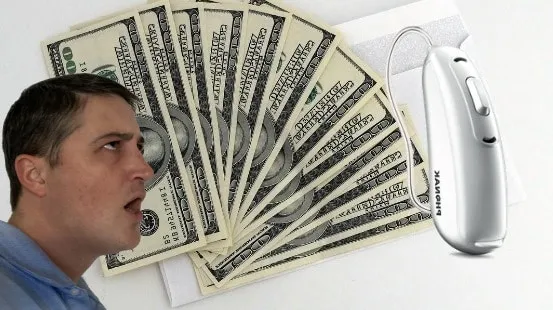Hearing loss is a prevalent condition that affects millions of individuals worldwide. For those seeking treatment, hearing aids offer a promising solution to improve their quality of life. However, one common concern among individuals considering hearing aids is the cost associated with these devices. Read on to explore the factors to consider when determining how expensive a hearing aid you should buy.
Technology Levels and Effectiveness
There is a widespread belief that hearing aid technology levels determine their effectiveness, with premium technology being considered the best. Prescription hearing aids are available in different technology levels, ranging from premium to basic, based on the features and customization options they offer. Premium is around $5,500-$7000, Basic around $1500-2000. Check prices out at ziphearing.
Premium hearing aids are designed to provide the latest and best features for optimal hearing performance for all life settings. However, it’s important to note that they come at a higher cost. On the other hand, basic-level hearing aids have limited features and customization options but are generally more affordable. Generally, the marketing says those with an active lifestyle should get premium while those on the couch most of the day would be fine with basic.
| Technology Level | Features |
|---|---|
| Basic | Amplification, noise reduction |
| Entry-level | Directional microphones, feedback control |
| Mid-range | Speech enhancement, wireless connectivity |
| Advanced | Artificial intelligence, rechargeable batteries |
| Premium | Customizable programs, tinnitus masking |
Research on Technology Levels
To shed light on the effectiveness of different technology levels, a study conducted by Dr. Robyn Cox and her team in 2016 aimed to compare the self-reported hearing abilities of adults using premium technology versus basic technology in real-world situations. The study involved 45 participants, around the age of 70, with mild to moderate adult-onset hearing loss.
Each participant tested two different brands of hearing aids, including both premium and basic level options, in a counterbalanced manner. The study followed best practices for fitting and programming the devices, including real ear measurement, adjusting programming based on perception, and providing counseling and follow-up adjustments.
Participants were surveyed on quality of life improvements, comparing each set of hearing aids to not using any hearing aids, and rated speech clarity, noise bother, device wearing experience, listening fatigue, sound comfort, and localization ability on a scale of one to ten. After each trial, participants were asked to identify which pair of devices they felt was better without knowing which were premium and which were basic.
Surprising Results
The study found that both premium and basic-level hearing aids provided significant benefits compared to not using hearing aids at all. Surprisingly, there were no statistically significant differences in perceived improvement between premium and basic technology. In other words, participants did not consistently prefer one technology level over the other.
It is worth noting that participant preferences for a premium or basic technology were influenced by the order in which they tried the devices, with the most recent experience being a significant factor. This highlights the subjective nature of perception and the importance of considering individual preferences when selecting a hearing aid.
Theories Behind the Findings
Three theories may explain why premium hearing aid technology did not consistently outperform basic technology in the study:
- Real-World Performance: The first theory suggests that the improvement seen in a laboratory setting may not translate into real-world benefits. The real world is unpredictable and complex, making it challenging to replicate those conditions in a lab. Additionally, having access to additional features in premium hearing aids does not guarantee that hearing care professionals know how to optimize them for better real-world performance.
- Test Sensitivity: The second theory proposes that the tests used in the study may not have been sensitive enough to identify statistically significant differences between premium and basic technology. It’s possible that the tests were not appropriate for directly comparing different technology levels.
- Study Flaws and Biases: The third theory suggests that the study may have had some flaws and potential biases. For example, the researchers accidentally mixed up the manual program order for 16 of the 45 test subjects, indicating a potential for other unidentified mistakes. Additionally, the study could have included different age ranges and severities of hearing loss to make the findings more applicable to the broader population.
Hearing Aids: Go for Gold and Embrace the Upgrade Dance!
My Personal Opinion
Alright folks, buckle up and get ready for some hearing aid wisdom from the person who fits hearing aids for a living! In my expert opinion, Regardless of this 2016 study. I wholeheartedly recommend going for the gold and getting the best darn hearing aid you can afford (see my current brand recommendations). Why settle for silver or bronze when you can have the auditory equivalent of a medal-wearing superhero? If you are really concerned about cost learn more about OTC vs professionally fit aids.
But wait, there’s more! Technology evolves faster than you can say “supercalifragilisticexpialidocious,” so it’s important to embrace the upgrade dance. Just like your favorite smartphone, hearing aids benefit from regular refreshes to keep up with the latest tech trends. Plan on strutting your stuff with shiny new hearing aids approximately every four years to stay ahead of the game and not deal with the headache of repairs without a functional backup device.
Now, if I were to treat myself to a hearing aid today, I’d go all out and opt for the premium level of technology. Picture this: you’ll be rocking the most cutting-edge features, feeling like James Bond with gadgets for your ears. Who wouldn’t want the best chance at improved hearing, wrapped up in a sleek, futuristic package?
Remember, folks, life’s too short to settle for mediocre sound. Treat yourself to the premium experience and be ready to groove with the times. Get those upgraded hearing aids, and let the world be your oyster of crystal-clear conversations and melodious music. Happy hearing! And if you have read this far, check out the hearing aid prices at ZipHearing, an advertiser on this site.

